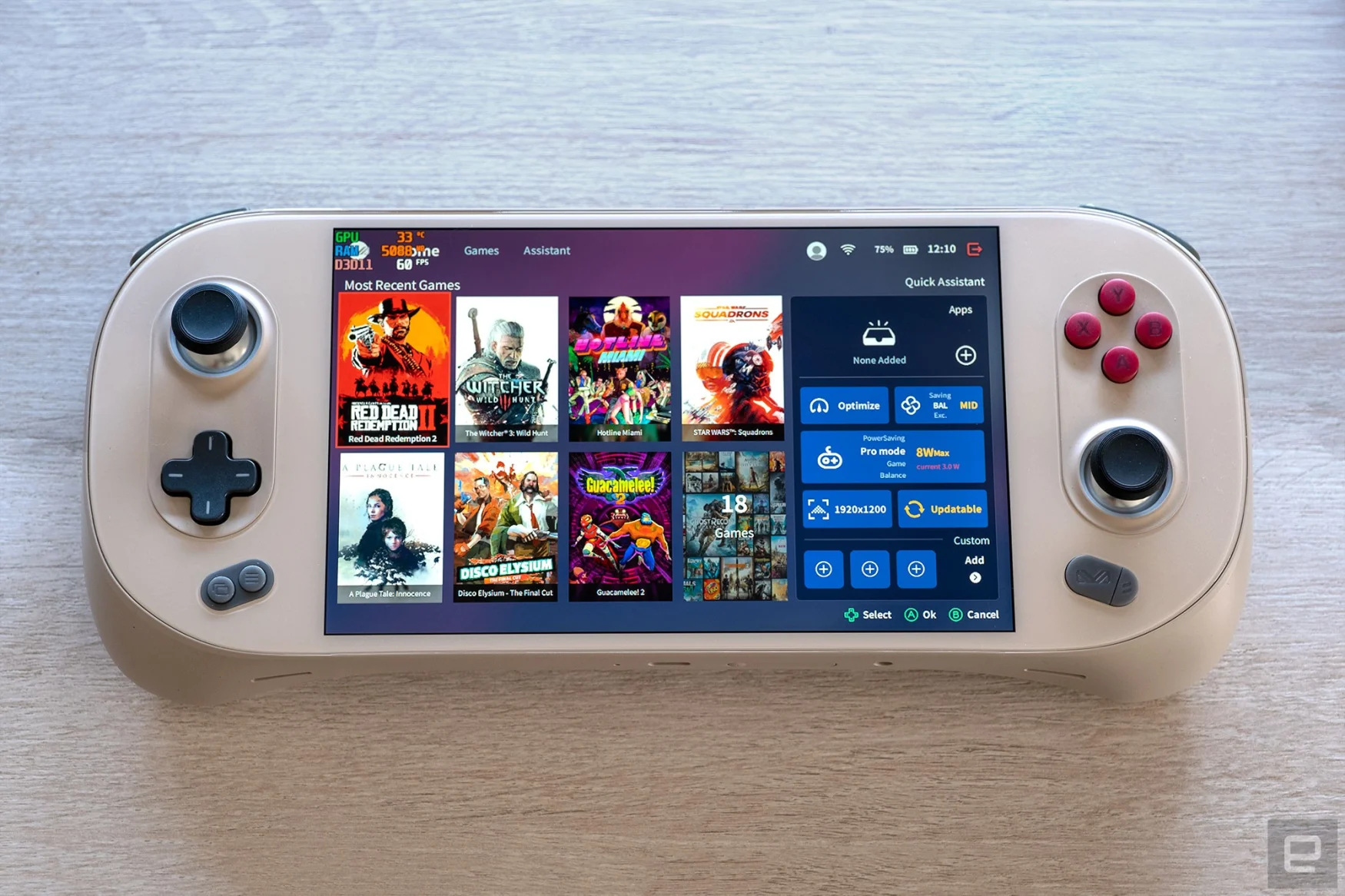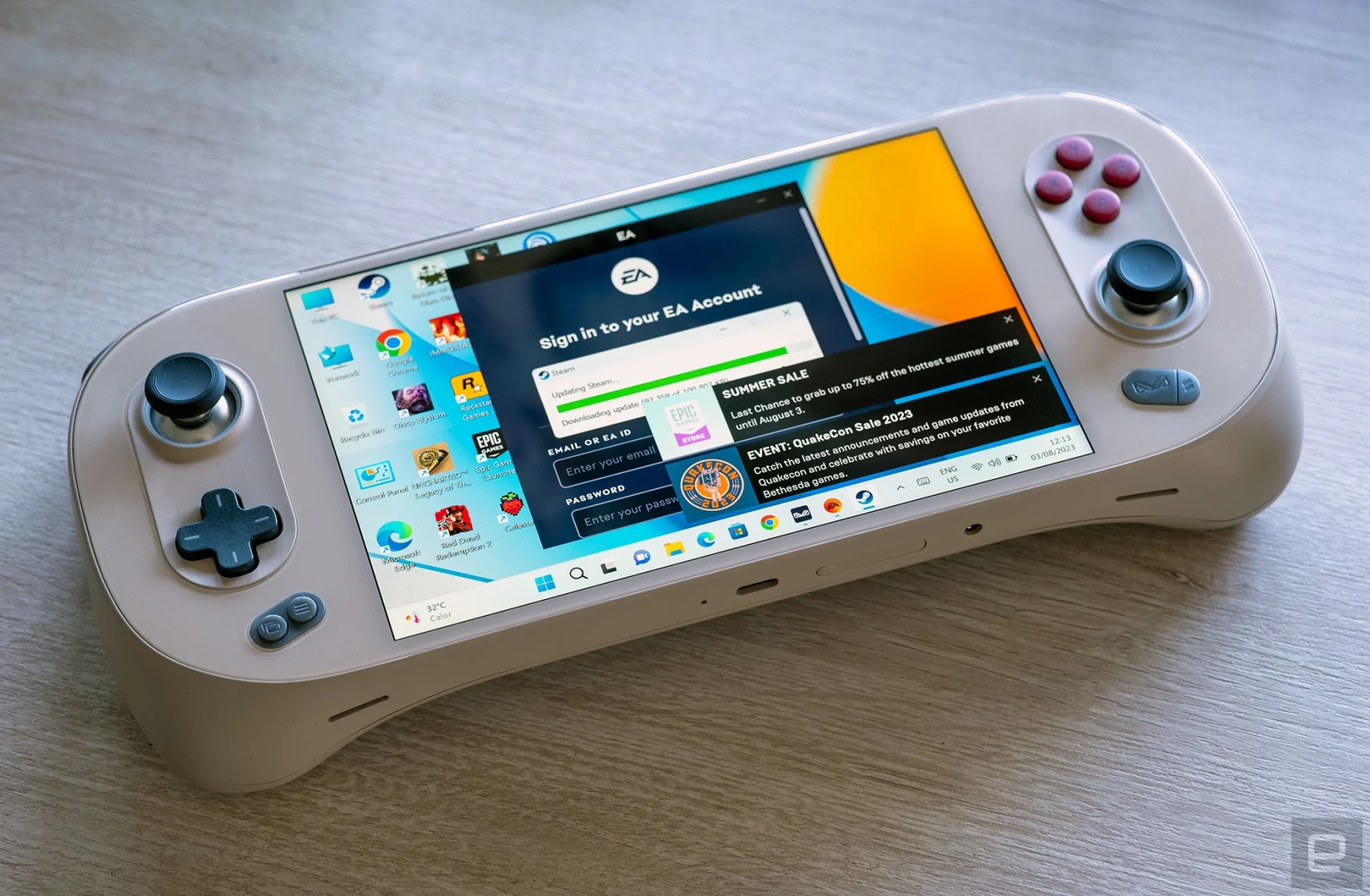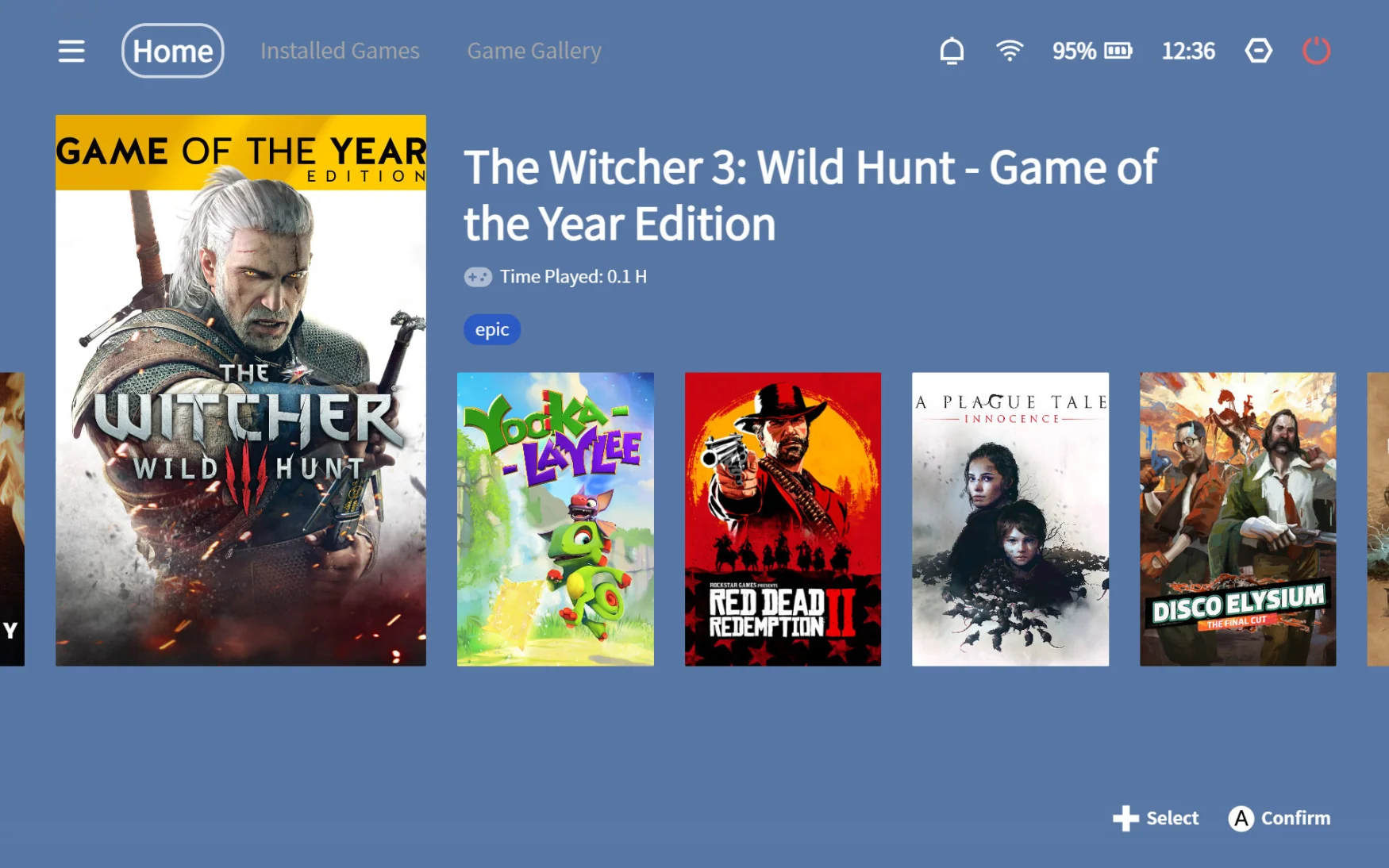The Ayaneo 2S is the company's best gaming handheld, until the next one
We only just reviewed the ROG Ally, and it’s already been dethroned as the “most powerful handheld gaming PC yet.” Or at least, it’s going to have to scoot over a little and let the Ayaneo 2S squeeze in. The two portable PCs have a lot in common: They both have 7-inch displays, they both run Windows 11, they both sport Zen 4-based AMD APUs and they both want to draw your attention away from the cheaper, older, bigger, but fan-favorite Steam Deck.
The Ayaneo 2S does best the ROG Ally in a few important areas though. The displays might be the same size, but the 2S has a 1200p resolution (ASUS’s is 1080p), the 2S has a larger battery (50Wh vs 40) and the Ally is only available with 16GB of RAM and 512GB of storage. The Ayaneo 2S is available in multiple configurations that start where the Ally does and go right up to 64GB RAM and a cavernous 4TB of storage. It’s important to note, though, that even the most affordable Zen 4-based Ayaneo starts at $999 (or $699 if you’re quick enough to bag an early bird) compared to the Ally’s relative affordability (starting at $699).
While Ayaneo competes with the likes of Valve and ASUS on a technical level, in most other ways, the company is more of an upstart in the world of gaming hardware. But one that has earned a dedicated army of fans thanks to its spec-heavy approach to product design.
The Ayaneo 2S isn’t just the Ayaneo 2 with a new 7840U processor, but that is by far the most important difference. Cosmetically the two are almost identical bar some larger vent holes on the 2S. There’s also a minor tweak to the triggers that stop them making a noise when fully depressed and an improved fingerprint reader. Most of the other upgrades are to do with cooling, including a graphene patch that has been added and the aforementioned airflow design.

Subscribe to the Engadget Deals Newsletter
Great deals on consumer electronics delivered straight to your inbox, curated by Engadget’s editorial team. See latest

Please enter a valid email address
Please select a newsletter
By subscribing, you are agreeing to Engadget’s Terms and Privacy Policy.

Either way, the new, more powerful processor is really what makes the 2S interesting. ASUS entering the handheld space has added credibility to the portable PC gaming space, perhaps creating a stepping stone between the dependability and smoother UI of the Steam Deck and the tech-heavy, but less refined experience of Ayaneo products. So when ASUS announced the ROG Ally, Ayaneo probably didn’t like losing a superlative claim (of being more powerful than Valve’s competition).
A new processor is only as good as the performance boost it brings, and even that has to be weighed against any extra tax on the battery (which remains the same 50.25Wh capacity as the original Ayaneo 2). The short version is, there are good gains to be had, but if you were considering the 6800U-based Ayaneo, that’s still a capable performer — and now a more affordable one.
In general the gaming experience on the 2S is superior, as you would hope, to that of the original Ayaneo 2. Broadly speaking, both can handle most games, even demanding AAA titles at very playable frame rates. The difference is more in the power profile/TDP you need to get that enjoyable experience. For example, on the 2S, I was able to get The Witcher 3 to run at a steady 60 fps (“Steam Deck” settings at 800p) with an 11W TDP setting. I could even dial it down to 8W and it’d hover between 55 and 60 fps. For the Ayaneo 2, I had to dial it up to around 15W to achieve a steady 60, or 10W for “almost” 60. This represents a modest, but important upgrade in performance — but every game is different.
With games like Red Dead Redemption 2 or Cyberpunk 2077, the difference is more pronounced. The Ayaneo 2 was able to serve up around mid-20 fps for both of these games at 15W TDP at 1200p. The 2S was able to crank out closer to 40 peak fps with a minimum over 30 at the same power setting. Dial the 2S up to 22W TDP and you can expect over 60 fps no problem.

It’s hard to do several side by side comparisons for all games and different situations, but it’s easy to see that the 7840U presents a significant upgrade in performance at the higher end. Some benchmarks even suggest that the Ayaneo 2S consistently bests the performance of the ROG ALLY with like for like settings. This could simply be down to differences in drivers for the new chipsets, but as YouTuber The Phawx points out, modern games often require a lot of VRAM, and APUs like the 7840U lean on system RAM for that, making the higher spec of the Ayaneo a clear advantage.
If you’re less worried about playing heavyweight games, and prefer indie titles or older/lighter games then the 2S really shines, being able to run things like Hades, Trine, Return of the Obra Dinn, Hotline Miami and so on at full/high quality settings without even flinching. Importantly, you’ll be able to do so at a much lower TDP — even as low as 5W for many of the above titles.
It’s with these less-demanding titles where the new processor’s efficiency most noticeably translates into extra battery life. With the Ayaneo 2, at lower TDP settings battery life seems to hover a little over the four hour mark (depending on the game being played). With the 2S, it’s possible to break the five hour mark if you’re frugal — of course this also means disabling wireless, lowering the screen brightness and so on, but it’s a marked improvement.
Sadly, those gains don’t seem to scale up at the high end. Once above 15W I didn’t notice significant gains in battery life. That said, if you’re now able to play a game at 15W that needed 20W of power on an older model, there’s obviously an inherent power saving there, but at like-for-like wattages, these Windows handhelds are still incredibly power hungry.
Ayaneo has been broadly praised for its hardware and performance since it entered the scene, it’s the software side of things where people seem to have the most complaints. It doesn’t take long with the 2S before you’re reminded that you’re basically holding a desktop. Especially if there’s a launcher between you and the game — as EA/Rockstar/Ubisoft titles tend to have. On the Steam Deck, for example, these are handled slightly better, but on the Ayaneo platform it can be ugly with different windows popping up.
The Ayaspace launcher itself rarely gets much praise, but I’ve always found it functional and a nicer experience than just launching titles from the desktop. It doesn’t do an amazing job of hiding Windows from you — you’ll regularly find yourself navigating the desktop with the analog sticks or touchscreen. For the most part you can boot up and get into a game quickly, but the specter of Microsoft’s operating system is never far away.

The better news is that Ayaneo has just made version 2.0 of its launcher available for download and it looks promising. The general user interface seems much slicker and more lightweight which feels much more in tune with what you might expect from a console experience. I was only able to spend a short amount of time with it, but aesthetically it feels like an improvement with more controls and settings closer to hand.
Perhaps the bigger problem for the 2S, or Ayaneo owners in general, is that… even in the time between starting this review and finishing it the company’s lineup has changed. The Ayaneo Air 1S, a more compact 7840-based handheld, has been announced. That’s not to be confused with the Air Pro and the Air Plus. Then there’s the Ayaneo Kun, a new, new flagship that’s all new, including an 8-inch display and Steam Deck-like touchpads. Not to mention the dizzying amount of different configurations within each of those, meaning Ayaneo probably has more SKUs than all of its competitors put together.
Predictably, the Ayaneo 2S is a great gaming handheld that outperforms most of its rivals in several key areas. It’ll handle almost any game you throw at it, and likely do so surprisingly well. But there’s still the matter of price. $999+ for a gaming handheld is a huge spend for most people. One of the reasons the Steam Deck has remained so popular despite new, “superior” competition from Ayaneo and ASUS etc. is that it’s relatively affordable.
Ayaneo looks set to continue to cater for those who are willing to pay for the latest and greatest, but it’s also at risk of alienating those users by making their $1,200 handheld feel last-gen in just seven months. At the moment, the company’s fans appear to enjoy the rapid-fire approach to releases. Just as they’re about to stop salivating over the latest product, another one pops up on the horizon. There is, of course, a question mark over how long Ayaneo can keep this up without alienating its fans, or even over-stretching its own resources. At least, for now, the next APU refresh from AMD isn’t set for another year or so, so perhaps that’s a chance for Ayaneo to catch its breath. Or not.
